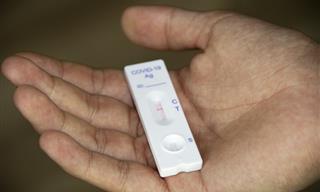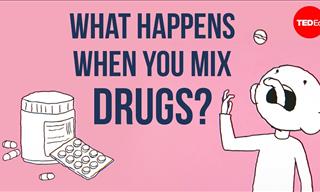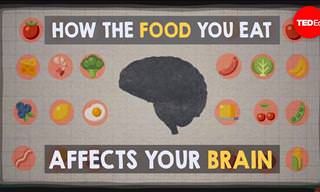

As you’re likely aware, COVID-19 severity is categorized into three groups: mild, moderate, and severe. But how do they differ?
The first thing one imagines when they hear “mild Covid” is having a low fever, sniffles, and maybe a sore throat for a few days. But this very hopeful definition we, non-professionals, imagine is very different from the way doctors see it.
Let’s begin by looking at the guidelines published by the National Institutes of Health (NIH):

As you can see, this definition means that even a case that’s considered mild can be quite debilitating, comparable to the worst flu you’ve ever had. Even in mild to moderate COVID-19, symptoms typically last for at least 9-10 days, but this time period could be extended to weeks or months.
In some studies or countries, the division is even cruder - all COVID-19 cases are distinguished as either severe or non-severe. Keep this in mind when you listen to the news.
What’s more, researchers also know that even a seemingly mild illness can take an ugly turn at any point. And probably most importantly, you have to remember that both mild and asymptomatic COVID-19 can lead to long-term complications. Studies on long-haul COVID-19 suggest that nearly 25% of Covid patients who were asymptomatic or exhibited mild symptoms develop long-term symptoms such as fatigue, migraines, and brain fog. "You can have mild Covid and still be a long hauler," Dr. Carlos del Rio, an infectious disease expert stated to CNN.
So, even if you get a mild or asymptomatic infection, chances are that you will feel miserable for weeks or even months. You must also remember that there’s still a lot we don’t know about the Omicron variant.
Share this information with family and friends!
H/T: Huffington Post, Healthline, CNN

COVID-19 Delta Variant - Important Facts You Should Know
The Delta variant of Covid-19 is the most concerning of all emerging strains of the Novel Coronavirus. Here's what you need to know about it.

We Might Have a COVID-19 Vaccine by End of 2020, After All
Two major companies - Pfizer and Moderna - have already developed their Covid-19 vaccines and they say they're 95% effective. How do they compare?

How to Detect a Fake COVID Test - Buyer Beware!
Scammers are tricking unsuspecting consumers by selling fake COVID tests and setting up false testing sites. Here's how to spot the liars!

Monkeypox - What It Is and What You Need to Know
Scientists point out that monkeypox is different from COVID-19 in several key ways.

5 of the MOST Common Types of Hernia
Read this guide to learn about this often overlooked medical condition and the 5 most common types of hernia.

When Is An Eye Infection a Cause For Concern?
While some eye infections can heal on their own, others can inflict serious damage and need urgent medical care...
 5:04
5:04
Important: The Dangers of Mixing Drugs Explained
What happens when we mix these drugs? Find out in this informative video.
 12:14
12:14
What Drinking Whiskey Actually Does to Your Body
While we now know that whiskey isn't the cure-all medicine people once though it was, it does have a few proven health benefits.
 15:56
15:56
Can Exercise Really Stop Heart Attacks?
Find out some of the best ways to prevent and reduce a risk of having a heart attack.
 4:53
4:53
You Are What You Eat: How Foods You Eat Affect Your Mood
In recent years we discovered how incredibly important a good diet is in preventing neurodegenerative diseases. Here's how it works.

If You Want to Live Longer... Bend Over More Often!
Add more years to your life by doing this one, simple exercise every day.

Don’t Believe These Lies: 12 Popular Egg Myths Busted
For the sake of french toast and sunny side up eggs for breakfast, we decided to bust 12 harmful and simply untrue beliefs about eggs
 11:45
11:45
What Happens When You Quit Sugar? You'll Be Surprised!
What happens to your body when you quit sugar? Find out!
 4:58
4:58
Here’s How You Can Lose the Fat UNDERNEATH Your Belly
Visceral fat is found inside your abdominal cavity. Getting rid of it can be a challenge, but not if you follow these simple tips.
 9:51
9:51
Fix Inner Leg Pain FOR GOOD With These Stretches
Struggling with inner-leg pain? Try these effective stretches.
 7:33
7:33
The Best Natural Remedy for Enlarged Prostate
This simple natural drink can be helpful for shrinking an enlarged prostate.

Beat Spider Veins With These Efficient, Natural Tips
Do you suffer from spider veins? Take advice on how you can treat or avoid them without paying a penny!
 8:56
8:56
Struggling With Obesity? These Exercises Can Help a Lot
Struggling with obesity? Doing these exercises can change your life for the better.
 8:25
8:25
How to Stop Leg Cramps Immediately - The Perfect Remedy
If you're over 50 and have regular leg cramps, stop everything and watch this video.

10 Most Frequent Misdiagnoses Made by Doctors
In the US, 1 out of every 20 adults are misdiagnosed. Here are 10 conditions that are commonly missed or mistaken for something else!

Owning a Cat Can Do Wonders For Your Health!
Pet ownership, especially cat ownership, can improve the quality of a person's life. Here are 10 health benefits of owning a cat.
 17:25
17:25
Chair Yoga: a Complete At Home Video Practice
This is a complete 17-minute beginner friendly yoga sequence suitable for all ages you can do on your chair.
 7:21
7:21
Can Aging Be Cured in Your Lifetime? It May Be So...
Could there be a cure for aging? Watch this video and find out!

9 Ways You Can Treat Fungal Infections at Home
If you suffer from some of these symptoms, there are a number of home remedies that can easily treat fungal infections.
 6:26
6:26
This Little Piece of Plastic Does Wonders For Your Feet
As we age, our toes tend to cram together. Spacing them promotes blood flow and prevents pain!
 8:03
8:03
Doing This for 5 Minutes Can Lower Your Blood Pressure!
These simple and effective exercises will help lower your blood pressure almost immediately.
 7:19
7:19
Doctors Explain: 2 Powerful Tools in Dealing With Anxiety
A renowned doctor equips you with not one, but two phenomenal tools to effectively manage and control your stress.
 11:00
11:00
Melt Away Neck Pain and Tension Headaches With These Tips!
Tension at the base of the neck is a common cause of tension headaches, neck pain, and many other issues. Let these 3 exercises help you in just a few minutes!
 3:18
3:18
This is the Most Effective Way to Remove Ear Wax at Home
Remove earwax at home with this effective hack.
 4:52
4:52
Tutorial: Relieve a Stiff Neck Naturally in Just 90 Seconds!
Take a look at several great stretches that you can try that will alleviate a stiff neck.

Massage These 3 Points if You Have High Blood Pressure
While high blood pressure is caused by a variety of things, its most common cause is hypertension. Reduce your high blood pressure by using the ancient technique of acupressure.
 3:17
3:17
WARNING: Why You Should Stay Away From Star Fruit
Hear more about the star fruit, and why you too should avoid it to prevent the risk of brain damage.
 3:33
3:33
What Causes Constipation? Find Out Here...
What's behind constipation? This informative TED-Ed video sheds some light on the matter!

WARNING: The Potential Risk of Grapefruit Juice
It's packed-full of vitamins and minerals, but it can also cause serious poisoning and even death....
 16:04
16:04
Transform Your Health with These Amazing Neck Techniques
These neck drills won't just relieve your neck discomfort, but will also treat a variety of neurological problems.

10 Surprising Reasons You’re Feeling Stressed Right Now
We think we know what makes us stressed, but there are a surprising number of minor daily activities stressing you out that you're not aware of...

Ever Heard of Sorghum? Hint: it's Something You Eat
In this article, we will learn about sorghum, an ancient wild grain compatible with gluten-free and diabetic diets.
 5:15
5:15
Difficulty Sleeping? Try This Healthy Drink Before Bed
Struggling with sleep? This natural drink can help.

Having Leg Cramps at Night? Then You Need to Know This
Night leg cramps beyond annoying: they can interfere with sleep and life quality. Here's everything you need to know about night leg cramps.
 13:30
13:30
25 Things About the Human Eye That Will Surprise You
Ophthalmologist Ashley Brissette, MD answers common eye-related questions for you.
 14:18
14:18
Learn Three Vagus Nerve Exercises for Anxiety Relief
In this video, you'll be shown three exercises of the vagus nerve to help mitigate anxiety and promote peacefulness.
 9:56
9:56
The Hidden Benefits of Nasal Breathing No One Told You
Discover the benefits of nasal breathing during sleep and exercise in this informative video.

The Complete Map to Our Most Important Pressure Points!
According to ancient oriental beliefs, every organ in the human body has a representative pressure point in the hand and the foot. Find out all about them here.
 1:55
1:55
3 One Minute Tricks to Fix Your Nightmare Back Pains
Do you have back pain as a result of prolonged sitting? Here are 3 easy techniques you can try anywhere.

For Great Health, Add Goji Berries to Your Shopping List!
From fighting aging to a super-charged immune system, this miracle fruit carries with it so many health benefits it should be in everyone's shopping cart.
 6:20
6:20
Is Breakfast REALLY the Most Important Meal?
Breakfast is the most important meal of the day - truth or myth? Watch to find out what happens to your body when you stop eating breakfast for two weeks.
 4:55
4:55
The MOST Important Exercise to Practice For Seniors
This video will walk you through one simple exercise recommended daily for older adults.


